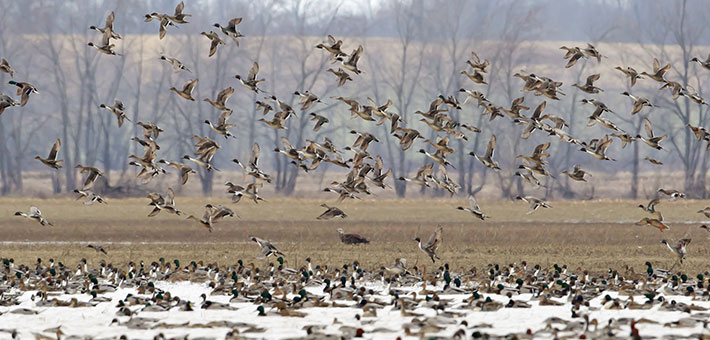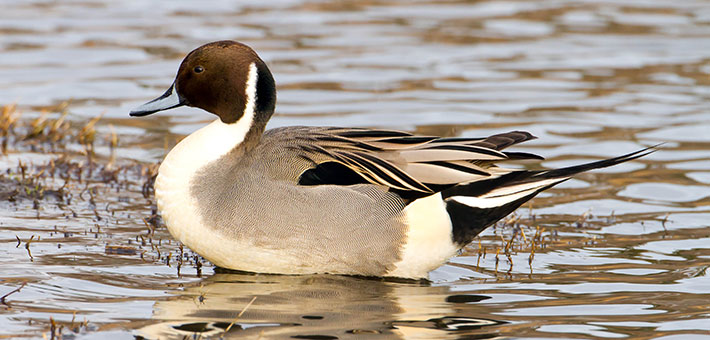By The U.S. Fish & Wildlife Service
Ducks love national wildlife refuges. Refuges provide the perfect place for migrating waterfowl to rest and feed as they head south for the winter. Right now, one of the best places to spot record breaking numbers of waterfowl is Two Rivers National Wildlife Refuge in Missouri and Illinois.
Two Rivers is an important stopover for hundreds of thousands of ducks and geese each fall. Right now more than 350,000 birds are utilizing refuge habitat. Established in 1958 to protect and enhance habitat for migratory birds, Two Rivers is located between the Mississippi River and Illinois Rivers and encompasses 9,225 acres of riverine and floodplain habitat scattered around the confluence of the rivers.
 Northern pintails, gadwalls and mallards in flight over wetland/Photo courtesy of Steve Gifford
Northern pintails, gadwalls and mallards in flight over wetland/Photo courtesy of Steve Gifford
October and November are the best months to see fall migration. You’ll easily be able to see thousands of waterfowl feeding in shallow wetlands of the Calhoun Division and on Swan Lake. Two Rivers has more than great birding – it’s the perfect place for recreation, including hiking, biking, paddling, hunting and fishing.
Who’s stopping at Two Rivers?
Each week during fall migration, biologists from the Illinois Natural History Survey fly over the Illinois and Mississippi Rivers to count the number of waterfowl in the Mississippi Flyway. This year, waterfowl counts have been particularly impressive. This is the third largest count at this location since the start of surveys back in 1948 and is the largest count of northern pintail and ring-necked ducks ever recorded on the refuge.
 Northern pintail on the water/Mick Thompson, CC
Northern pintail on the water/Mick Thompson, CC
These counts are more than impressive numbers – they help define general trends in the number of waterfowl resting and feeding at Two Rivers and other neighboring national wildlife refuges. Survey results are used by managers, hunters and birdwatchers to monitor the progress of migration. Counts also give biologists a sense of how healthy refuge habitats are and how restoration work is benefiting birds. Check out the latest waterfowl numbers from the Illinois Natural History Survey and plan your visit to Two Rivers National Wildlife Refuge today!
–
Comments welcome.
Posted on November 21, 2017


